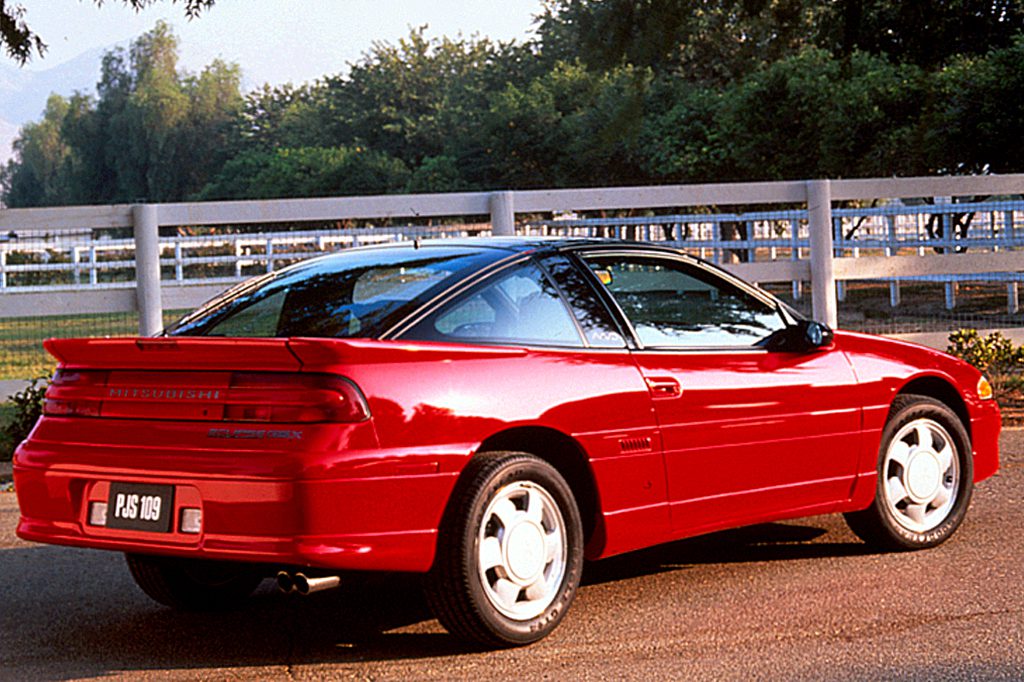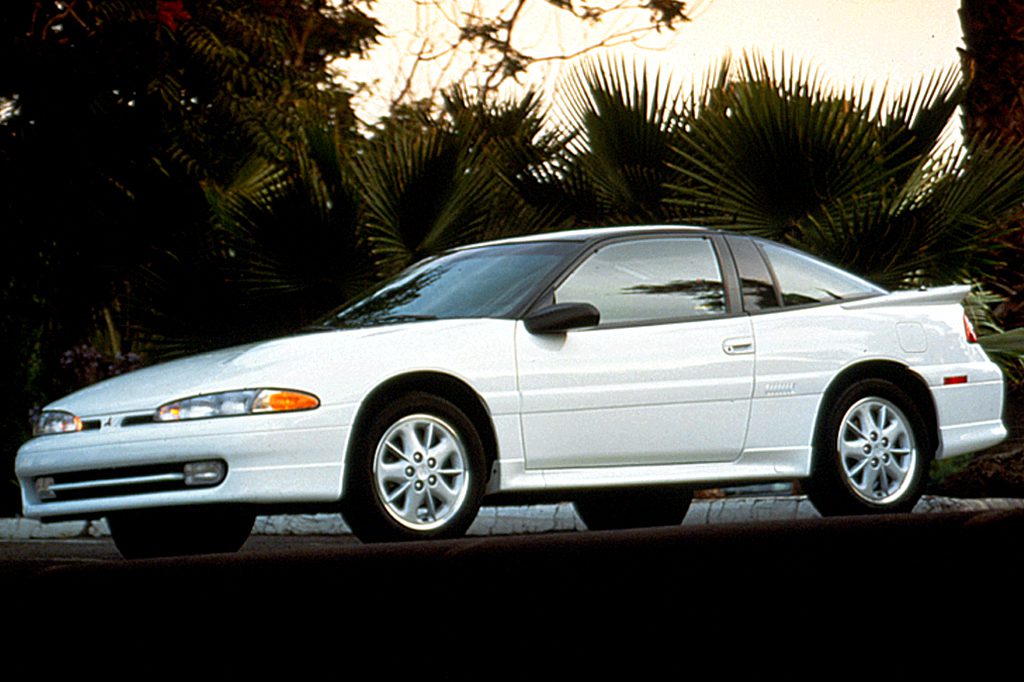| Sporty/performance car; Built in USA |
|
|
| Good condition price range: $1,000 – $2,100* |

1990 Mitsubishi Eclipse GS

1992 Mitsubishi Eclipse

1993 Mitsubishi Eclipse

1990 Mitsubishi Eclipse interior

1990 Mitsubishi Eclipse 2.0-liter engine
| Pros: |
|
| Cons: |
|
In our view, the first-generation Mitsubishi Eclipse ranks as one of the best values among small sports coupes. We rate the GS with the 135-horsepower DOHC 4-cylinder and the turbocharged all-wheel-drive GSX as the “picks of the litter.”
Overview
Built on the same assembly line as the similar Plymouth Laser and Eagle Talon, the Eclipse is a rakishly styled sporty coupe. Base and ES Eclipses offered a 92-horsepower 1.8-liter 4-cylinder. Move up to the the GS, and Mitsubishi mounted a 135-horsepower 2.0-liter, twin-cam 4-cylinder. The GS Turbo and all-wheel-drive GSX got a 195-horsepower turbocharged 2.0-liter 4-cylinder. A 5-speed manual gearbox was standard, with an optional 4-speed automatic (not available initially on turbo models). Antilock brakes were optional, but airbags were not.
Yearly Updates
| 1991 Eclipse Antilock brakes and a 4-speed automatic are new options for the Eclipse GS Turbo and all-wheel-drive GSX. When mated with the automatic, however, horsepower dips from 190 to 180. A limited-slip differential is now standard on the GSX, but requires you to forfeit antilock brakes. |
| 1992 Eclipse A new nose with exposed headlamps replace the previous rendering with its pop-up lenses. The 1992 Eclipse also sports a new front air dam and trim accents in back. |
| 1993 Eclipse Antilock brakes become standard on the GSX rather than optional, while the other versions of the 1993 Eclipse receive several cosmetic and equipment changes. The GS receives a new free-standing rear spoiler, while all but the base model come with a wraparound spoiler with the ubiquitous center high-mount stoplamp. |
| 1994 Eclipse Few changes are instituted for 1994 in anticipation of an all-new version for 1995. |
